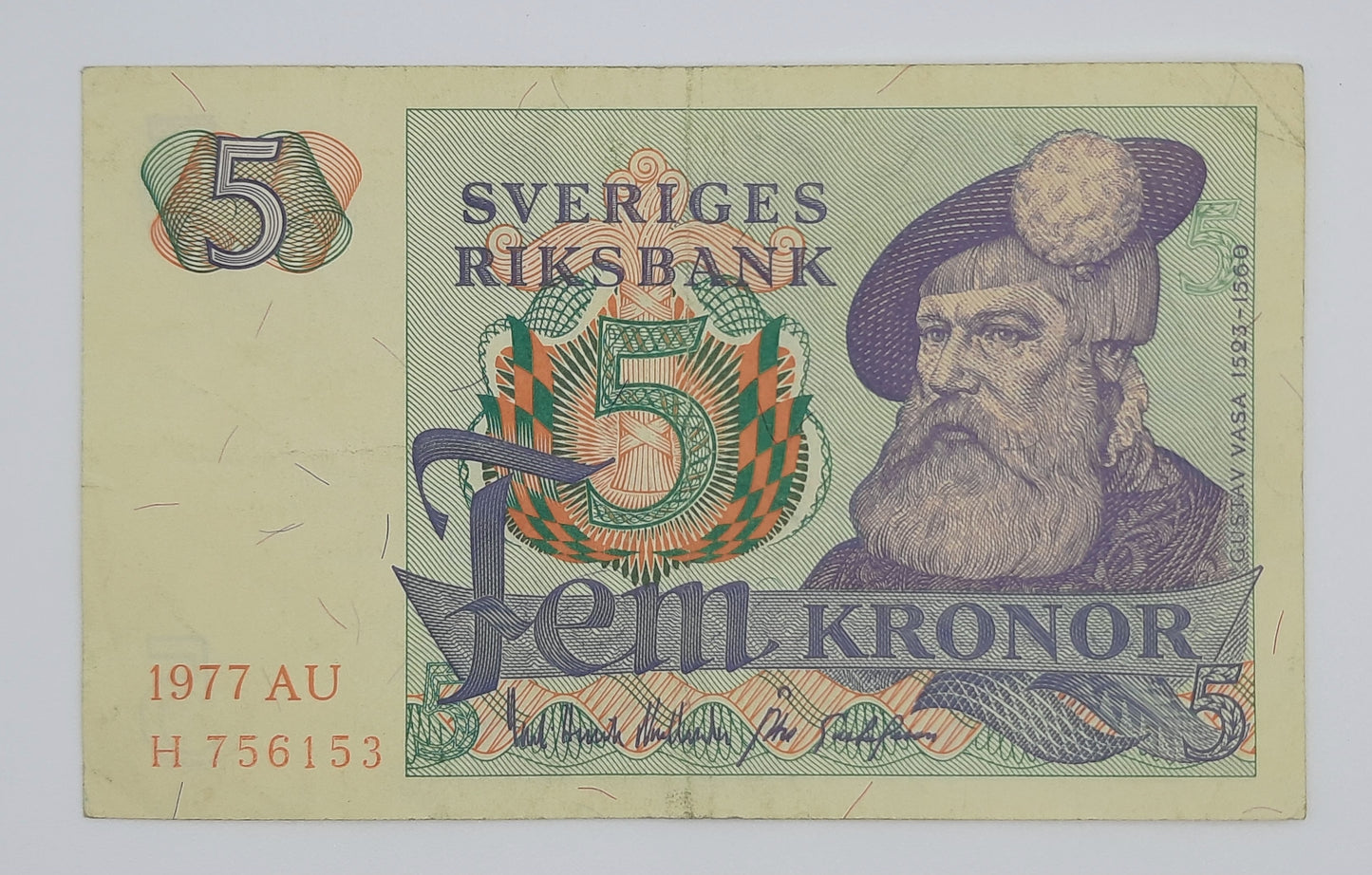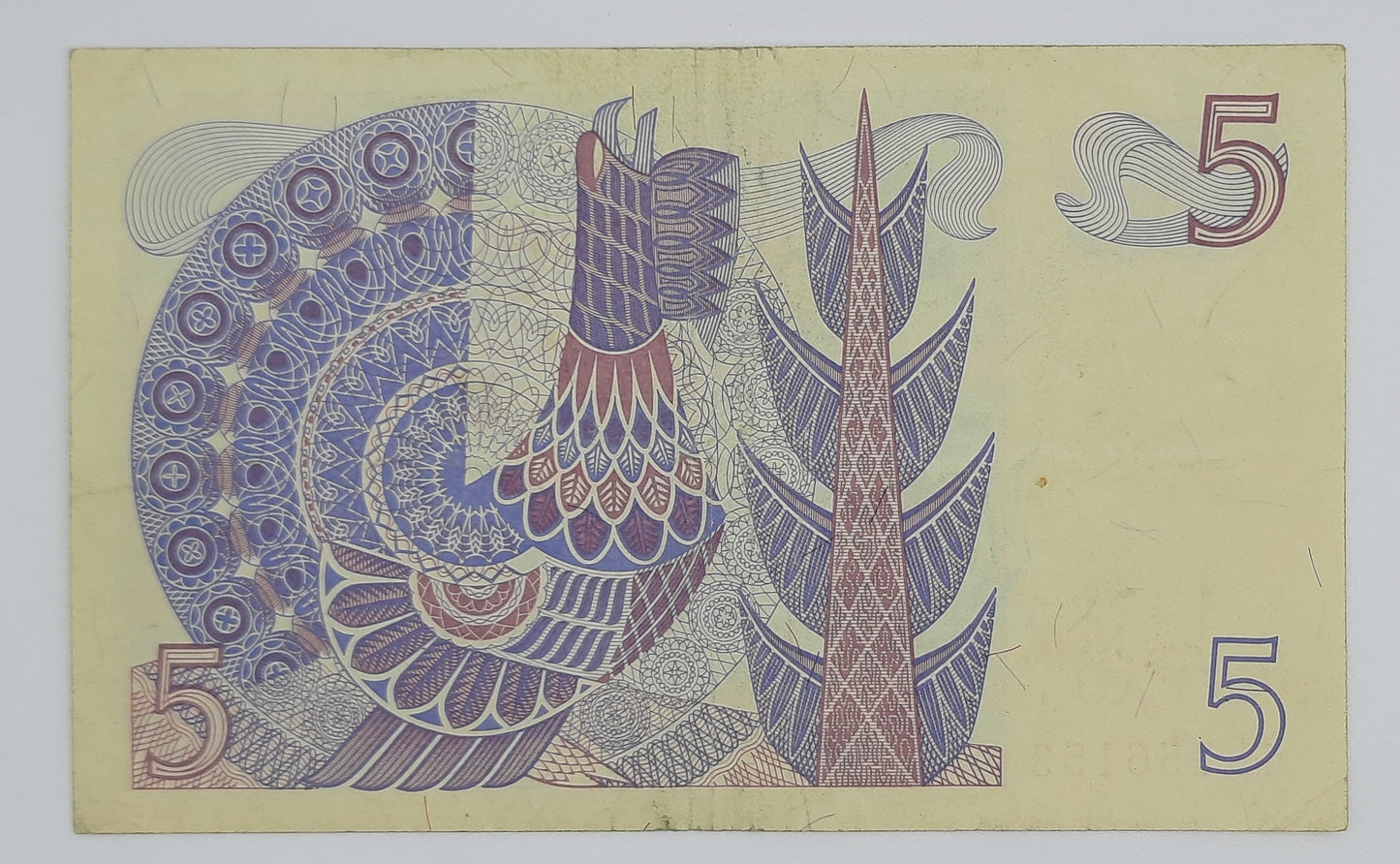notescounter
1977 Sweden, Sveriges Riksbank - 5 Swedish Kronor SEK Banknote Serial NO. H 756153 P-51d
1977 Sweden, Sveriges Riksbank - 5 Swedish Kronor SEK Banknote Serial NO. H 756153 P-51d
Couldn't load pickup availability
Description
Description
1977 Sweden 5 Kronor Banknote – Gustav Vasa & Nordic Heritage Pick# 51d.1 | Numista# 202682
Issued by Sveriges Riksbank, the 1977 5 Kronor note reflects Sweden’s reverence for historical leadership and natural symbolism. Part of the 1965–1981 series, this note features King Gustav Vasa, the founder of modern Sweden, whose reign marked the country’s emergence as a sovereign nation. The design blends historical portraiture with stylized wildlife, making it a distinctive piece in Scandinavian numismatics.
Design Highlights
Obverse:
Portrait of King Gustav Vasa, based on Jakob Binck’s 16th-century painting
Latin script: SVERIGES RIKSBANK – FEM KRONOR
Guilloche patterns in green, purple, orange, and red
Date: 1977 (light red print variant)
Reverse:
Stylized Western capercaillie (woodland grouse) and spruce tree
Minimalist layout emphasizing Sweden’s forested identity
Watermark:
Rooster motif
Key Specifications
Feature Description
Country Sweden
Issuer Sveriges Riksbank
Year of Issue 1977
Denomination 5 Kronor
Pick Number P# 51d.1
Printer Tumba Bruk, Sweden
Size 110 × 68 mm
Material Paper
Watermark Rooster
Security Features Intaglio printing, watermark, guilloche patterns
Demonetized Yes – officially withdrawn on 31 December 1998
Why Collect This Note?
The 1977 5 Kronor note is a compact yet historically rich artifact, ideal for:
Collectors of Swedish monarchy and foundational figures
Enthusiasts of wildlife-themed banknotes
Gifts for those interested in Scandinavian history and design
Curators of demonetized Nordic currency
With its blend of regal portraiture and natural symbolism, this note offers a compelling glimpse into Sweden’s cultural and ecological identity during the late 20th century.
Share


Look up Country, Denomination or Year
-

Australia and Oceania
Australian & Oceanian Banknotes for Sale – Rare & Historic Currency from...
-

North America
North American Banknotes for Sale – Rare & Historic Currency from Across...
-

South America
South American Banknotes for Sale – Rare & Historic Currency from Across...







